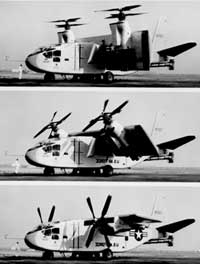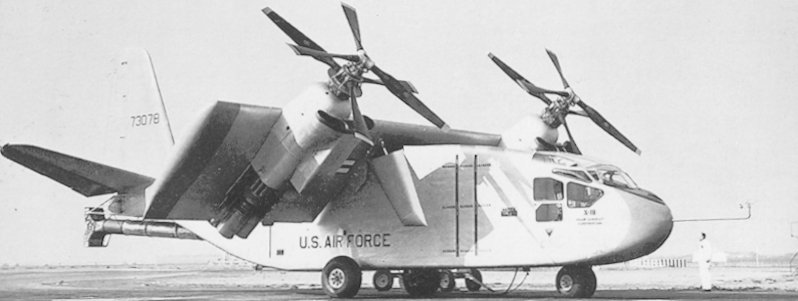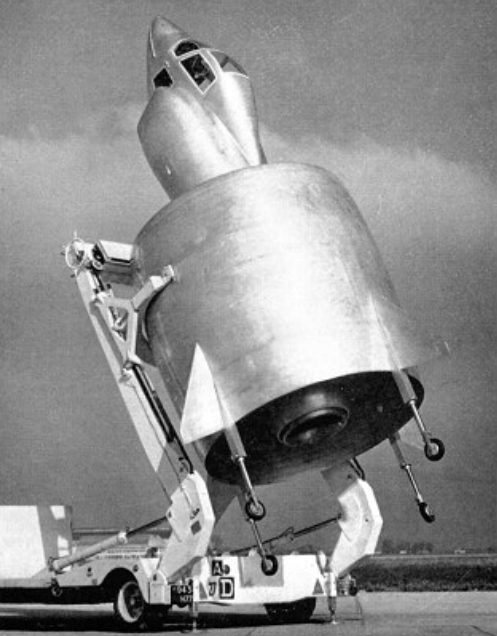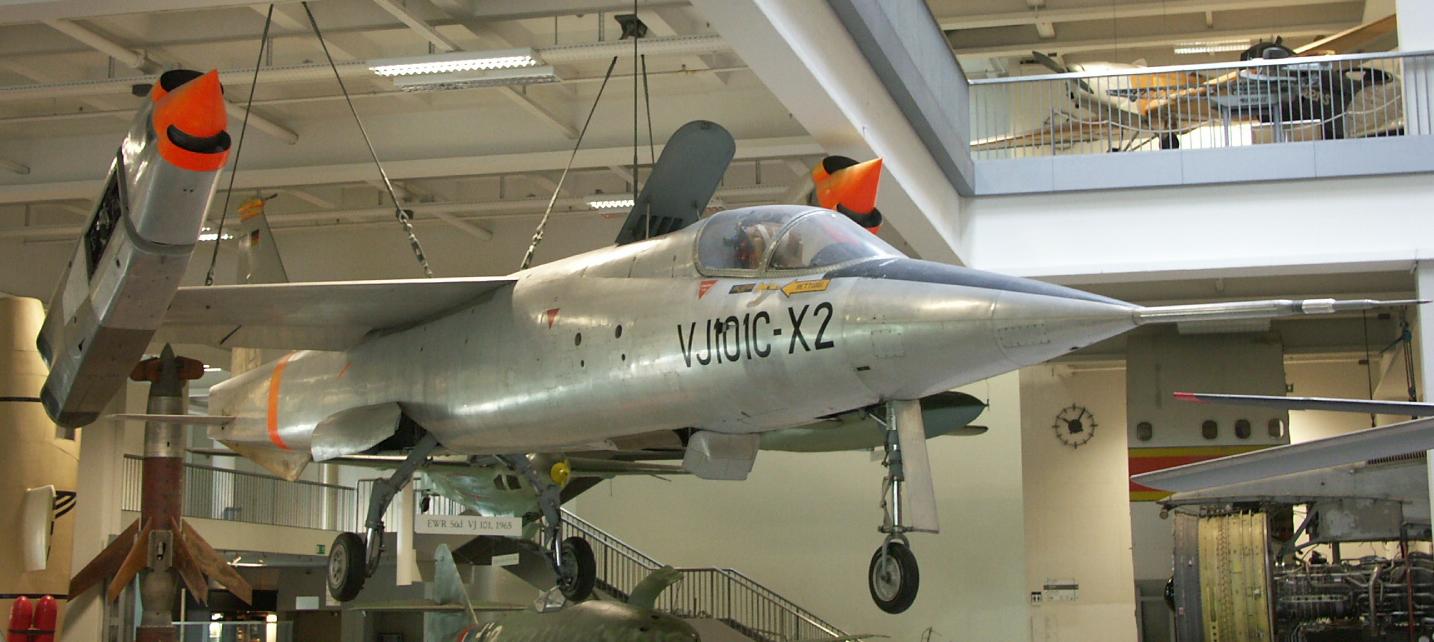|
Tiltwing Aircraft
A tiltwing aircraft features a wing that is horizontal for conventional forward flight and rotates up for vertical takeoff and landing. It is similar to the tiltrotor design where only the propeller and engine rotate. Tiltwing aircraft are typically fully capable of VTOL operations.Markman, Steve and Bill Holder. "Tilt-Wing VTOL Systems". ''Straight Up: A History of Vertical Flight''. Schiffer Publishing, 2000. . The tiltwing design offers certain advantages in vertical flight relative to a tiltrotor. Because the slipstream from the rotor strikes the wing on its smallest dimension, the tiltwing is able to apply more of its engine power to lifting the aircraft. For comparison, the V-22 Osprey tiltrotor loses about 10% of its thrust to interference from the wings. Another advantage of tiltwing aircraft is the ease of transition between VTOL and horizontal flight modes. A tiltrotor must first fly forwards like a helicopter, building airspeed until wing lift is sufficient to all ... [...More Info...] [...Related Items...] OR: [Wikipedia] [Google] [Baidu] |
X-18 Tilting Its Wing Bw
The Hiller X-18 was an experimental cargo transport aircraft designed to be the first testbed for tiltwing and V/STOL (vertical/short takeoff and landing) technology. Development Design work started in 1955 in aviation, 1955 by Stanley Hiller Jr and Hiller Aircraft Corporation received a manufacturing contract and funding from the United States Air Force, U.S. Air Force to build the only X-18 built, serialled ''57-3078''. To speed up construction and conserve money, the plane was constructed from scavenged parts including a Chase C-122 Avitruc, YC-122C Avitruc fuselage, ''49-2883'', and turboprops from the Lockheed XFV, Lockheed XFV-1 and Convair XFY, Convair XFY-1 Pogo experimental fighter programs. The tri-bladed contra-rotating propellers were a giant 16 ft (4.8 m) across. The Westinghouse turbojet engine had its exhaust diverted upwards and downwards at the tail to give the plane pitch control at low speeds. Hiller nicknamed their X-18 the Propelloplane for public re ... [...More Info...] [...Related Items...] OR: [Wikipedia] [Google] [Baidu] |
Aviation Week & Space Technology
''Aviation Week & Space Technology'', often abbreviated ''Aviation Week'' or ''AW&ST'', is the flagship magazine of the Aviation Week Network. The weekly magazine is available in print and online, reporting on the aerospace, defense and aviation industries, with a core focus on aerospace technology. It has a reputation for its contacts inside the United States military and industry organizations. ''Aviation Week'' was a favorite conduit for defense-related companies and labs to leak information to the public as part of their policy by press release efforts. This led to it being informally referred to "Aviation Leak and Space Mythology". History The magazine was first published in August 1916. Early editors Ladislas d'Orsy and Donald W. McIlhiney (1921 to 25) were Quiet Birdmen. Publisher (1927 to 29) Earl D. Osborn was also a Quiet Birdman. With the coming of the Space Age, the current title was adopted in 1960. Other titles the magazine has held include ''Aviation & Aircraft ... [...More Info...] [...Related Items...] OR: [Wikipedia] [Google] [Baidu] |
Coleopter
A coleopter is a type of VTOL aircraft design that uses a ducted fan as the primary fuselage of the entire aircraft. Generally they appear to be a large barrel-like extension at the rear, with a small cockpit area suspended above it. Coleopters are generally designed as tail-sitters. The term is an anglicisation of the French '' coléoptère'' "beetle" after the first actual implementation of this design, the SNECMA Coléoptère of the mid-1950s. The first design of an aircraft clearly using the coleopter concept was developed during World War II. From 1944 on, the Luftwaffe was suffering from almost continual daytime attacks on its airfields and was finding it almost impossible to conduct large-scale operations. Their preferred solution was to introduce some sort of VTOL interceptor that could be launched from any open location, and there were many proposals for such a system. Heinkel conducted a series of design studies as part of their Heinkel Wespe and Heinkel Lerche program ... [...More Info...] [...Related Items...] OR: [Wikipedia] [Google] [Baidu] |
Tiltjet
A tiltjet is an aircraft propulsion configuration that was historically tested for proposed VTOL, Vertical Take-off and Landing (VTOL)-capable fighters. The tiltjet arrangement is, in concept, broadly similar to that of the tiltrotor; whereas a tiltrotor utilises pivotable rotors, the tiltjet employs jet engines capable of moving to angle their thrust between downwards and rearwards positions. A typical arrangement has the engines mounted on the wingtips, in which the entire propulsion system is rotated from axial to dorsal in order to achieve the transition from hover or vertical flight to horizontal. Aircraft of such a configuration are fully capable of performing VTOL operations, akin to a helicopter, as well as conducting high speed flights. However, the configuration has been restrained to experimental aircraft only, as other configurations for VTOL aircraft have been pursued instead. History During the 1950s, rapid advances in the field of jet propulsion, particularly in ter ... [...More Info...] [...Related Items...] OR: [Wikipedia] [Google] [Baidu] |
Tiltrotor
A tiltrotor is an aircraft which generates lift and propulsion by way of one or more powered rotors (sometimes called ''proprotors'') mounted on rotating shafts or nacelles usually at the ends of a fixed wing. Almost all tiltrotors use a transverse rotor design, with a few exceptions that use other multirotor layouts. Tiltrotor design combines the VTOL capability of a helicopter with the speed and range of a conventional fixed-wing aircraft. For vertical flight, the rotors are angled so the plane of rotation is horizontal, generating lift the way a normal helicopter rotor does. As the aircraft gains speed, the rotors are progressively tilted forward, with the plane of rotation eventually becoming vertical. In this mode the rotors provide thrust as a propeller, and the airfoil of the fixed wings takes over providing the lift via the forward motion of the entire aircraft. Since the rotors can be configured to be more efficient for propulsion (e.g. with root-tip twist) and it ... [...More Info...] [...Related Items...] OR: [Wikipedia] [Google] [Baidu] |
Tailsitter
A tail-sitter, or tailsitter, is a type of VTOL aircraft that takes off and lands on its tail, then tilts horizontally for forward flight. Originating in the 1920s with the inventor Nikola Tesla, the first aircraft to adopt a tail-sitter configuration were developed by Nazi Germany during the Second World War. Development of such aircraft spiked during the late 1940s and 1950s, as aircraft designers and defence planners alike recognised the potential value of fixed-wing aircraft that could perform both a vertical take-off and vertical landing while also transitioning into and out of conventional flight. Inherent problems with tail-sitter aircraft were poor pilot visibility and control difficulties, especially during vertical descent and landing. Programmes to develop manned tail-sitters were typically terminated in the form of the more practical thrust vectoring approach, as used by aircraft such as the Hawker Siddeley Harrier and Yakovlev Yak-38. Description A tail-sitter sits ... [...More Info...] [...Related Items...] OR: [Wikipedia] [Google] [Baidu] |
Thrust Vectoring
Thrust vectoring, also known as thrust vector control (TVC), is the ability of an aircraft, rocket, or other vehicle to manipulate the direction of the thrust from its engine(s) or motor(s) to control the attitude or angular velocity of the vehicle. In rocketry and ballistic missiles that fly outside the atmosphere, aerodynamic control surfaces are ineffective, so thrust vectoring is the primary means of attitude control. Exhaust vanes and gimbaled engines were used in the 1930s by Robert Goddard. For aircraft, the method was originally envisaged to provide upward vertical thrust as a means to give aircraft vertical (VTOL) or short (STOL) takeoff and landing ability. Subsequently, it was realized that using vectored thrust in combat situations enabled aircraft to perform various maneuvers not available to conventional-engined planes. To perform turns, aircraft that use no thrust vectoring must rely on aerodynamic control surfaces only, such as ailerons or elevator; aircraft ... [...More Info...] [...Related Items...] OR: [Wikipedia] [Google] [Baidu] |
Weserflug P
Weser Flugzeugbau GmbH, known as Weserflug, was an aircraft manufacturing company in Germany. History The company was founded in 1934 as a subsidiary of the ship and machine company Deutsche Schiff- und Maschinenbau AG (DESCHIMAG). It began production that year at Berlin Tempelhof, and in Bremen. In 1935, Dr. Adolf Rohrbach became technical director of a new Weserflug factory at Lemwerder, near Bremen, which opened in 1936. He had been working on ideas for VTOL (Vertical TakeOff and Landing) aircraft since 1933, and now developed them further. In 1938, the company developed the Weserflug P.1003, a VTOL aircraft. It had 4 m diameter propellers that swivelled between horizontal and vertical, and could fly up to 650 km/h. It requires very complex gearing to tilt the wings without varying the power to the propellers, and therefore was never built. World War II During World War II Weserflug had another factory in Liegnitz. It built Ju 188 and Ju 388 bombers, one of which su ... [...More Info...] [...Related Items...] OR: [Wikipedia] [Google] [Baidu] |
Vertol VZ-2
The Vertol VZ-2 (or Model 76) was a research aircraft built in the United States in 1957 to investigate the tiltwing approach to vertical take-off and landing. Design and development The aircraft had a fuselage of tubular framework (originally uncovered) and accommodation for its pilot in a helicopter-like bubble canopy. The T-tail incorporated small ducted fans to act as thrusters for greater control at low speeds. Ground tests began in April 1957 and on 13 August, the VZ-2 took off for the first time in hover mode only. On 23 July 1958, the aircraft made its first full transition from vertical flight to horizontal flight. By the time the test program ended in 1965, the VZ-2 had made some 450 flights, including 34 full transitions. The aircraft has been preserved by the National Air and Space Museum in storage at the Paul E. Garber Preservation, Restoration, and Storage Facility. Specifications See also References * * {{US Army VTOL Z-02, Vertol Tiltwing aircraf ... [...More Info...] [...Related Items...] OR: [Wikipedia] [Google] [Baidu] |
LTV XC-142
The Ling-Temco-Vought (LTV) XC-142 was a tri-service tiltwing experimental aircraft designed to investigate the operational suitability of vertical/short takeoff and landing (V/STOL) transports. An XC-142A first flew conventionally on 29 September 1964, and on 11 January 1965, it completed its first transitional flight by taking off vertically, changing to forward flight and finally landing vertically. Its service sponsors pulled out of the program one by one, and it eventually ended due to a lack of interest after demonstrating its capabilities successfully. Development In 1959 the United States Army, Navy and Air Force began work on the development of a prototype V/STOL aircraft that could augment helicopters in transport-type missions. Specifically they were interested in designs with longer range and higher speeds than existing helicopters, in order to support operations over longer distances, or in the case of the United States Marine Corps, from further offshore. On 27 Janu ... [...More Info...] [...Related Items...] OR: [Wikipedia] [Google] [Baidu] |
Kaman K-16B
The Kaman K-16B was an experimental vertical-takeoff-and-landing aircraft that was constructed by Kaman Aircraft for the United States Navy in 1959 to evaluate the tiltwing concept. Converted from a Grumman Goose amphibian, the K-16B underwent extensive wind tunnel and tethered testing, but was not flown before the project was terminated in 1962. Design and development During the late 1950s, there was extensive interest in the vertical takeoff and landing concept for aircraft, with multiple experimental types ordered to develop the technology for potential service. The United States Navy contracted with Kaman Aircraft of Bloomfield, Connecticut to build a testbed based on the company's 'rotorprop' concept for tiltwing aircraft,Swanborough 1964, p.50. using a Grumman JRF-5 Goose amphibian and other existing parts to reduce the cost and time necessary.''Jane's'' 1959–1960, p.331. The fuselage and tail of the Goose were mated to a new tilting wing and engine configuration; the ... [...More Info...] [...Related Items...] OR: [Wikipedia] [Google] [Baidu] |
Hiller X-18
The Hiller X-18 was an experimental cargo transport aircraft designed to be the first testbed for tiltwing and V/STOL (vertical/short takeoff and landing) technology. Development Design work started in 1955 in aviation, 1955 by Stanley Hiller Jr and Hiller Aircraft Corporation received a manufacturing contract and funding from the United States Air Force, U.S. Air Force to build the only X-18 built, serialled ''57-3078''. To speed up construction and conserve money, the plane was constructed from scavenged parts including a Chase C-122 Avitruc, YC-122C Avitruc fuselage, ''49-2883'', and turboprops from the Lockheed XFV, Lockheed XFV-1 and Convair XFY, Convair XFY-1 Pogo experimental fighter programs. The tri-bladed contra-rotating propellers were a giant 16 ft (4.8 m) across. The Westinghouse turbojet engine had its exhaust diverted upwards and downwards at the tail to give the plane pitch control at low speeds. Hiller nicknamed their X-18 the Propelloplane for public re ... [...More Info...] [...Related Items...] OR: [Wikipedia] [Google] [Baidu] |









.jpg)
